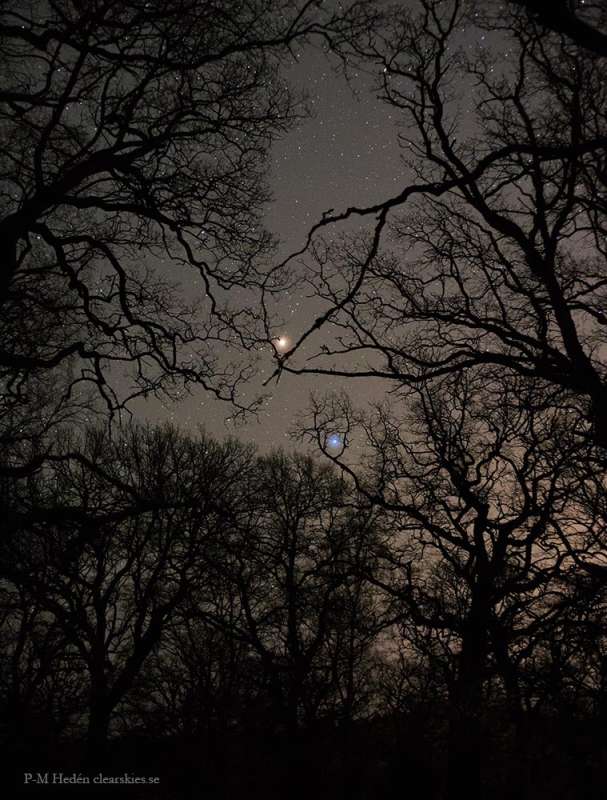Credit & Copyright: P-M Hedén (Clear Skies,
TWAN)
Explanation:
A bright pair of sky objects will be visible together during the next few months.
Mars will shine
brightly in its familiar
rusty hue as it reaches its
brightest
of 2014 next week.
The reason that Mars appears so bright is that
Earth and Mars are
close
to each other in their long orbits around the Sun.
Spica,
on the other hand, shines constantly as one of the
brightest blue stars in the night sky.
Pronounced "spy-kah", the
blue-hued star
has been visible throughout
human history
and the sounds that identify it today date back to
ancient times.
Pictured above, the
planet and the star were photographed rising
together toward the southeast after sunset
last week
through old
oak trees in
Sweden.
Click Hyperspace:
Random APOD Generator
1999 2000 2001 2002 2003 2004 2005 2006 2007 2008 2009 2010 2011 2012 2013 2014 2015 2016 2017 2018 2019 2020 2021 2022 2023 2024 2025 |
Yanvar' Fevral' Mart Aprel' Mai Iyun' Iyul' Avgust Sentyabr' Oktyabr' Noyabr' Dekabr' |
NASA Web Site Statements, Warnings, and Disclaimers
NASA Official: Jay Norris. Specific rights apply.
A service of: LHEA at NASA / GSFC
& Michigan Tech. U.
|
Publikacii s klyuchevymi slovami:
Mars - Spica - trees - Mars - zvezdy - nochnoe nebo
Publikacii so slovami: Mars - Spica - trees - Mars - zvezdy - nochnoe nebo | |
Sm. takzhe:
Vse publikacii na tu zhe temu >> | |
